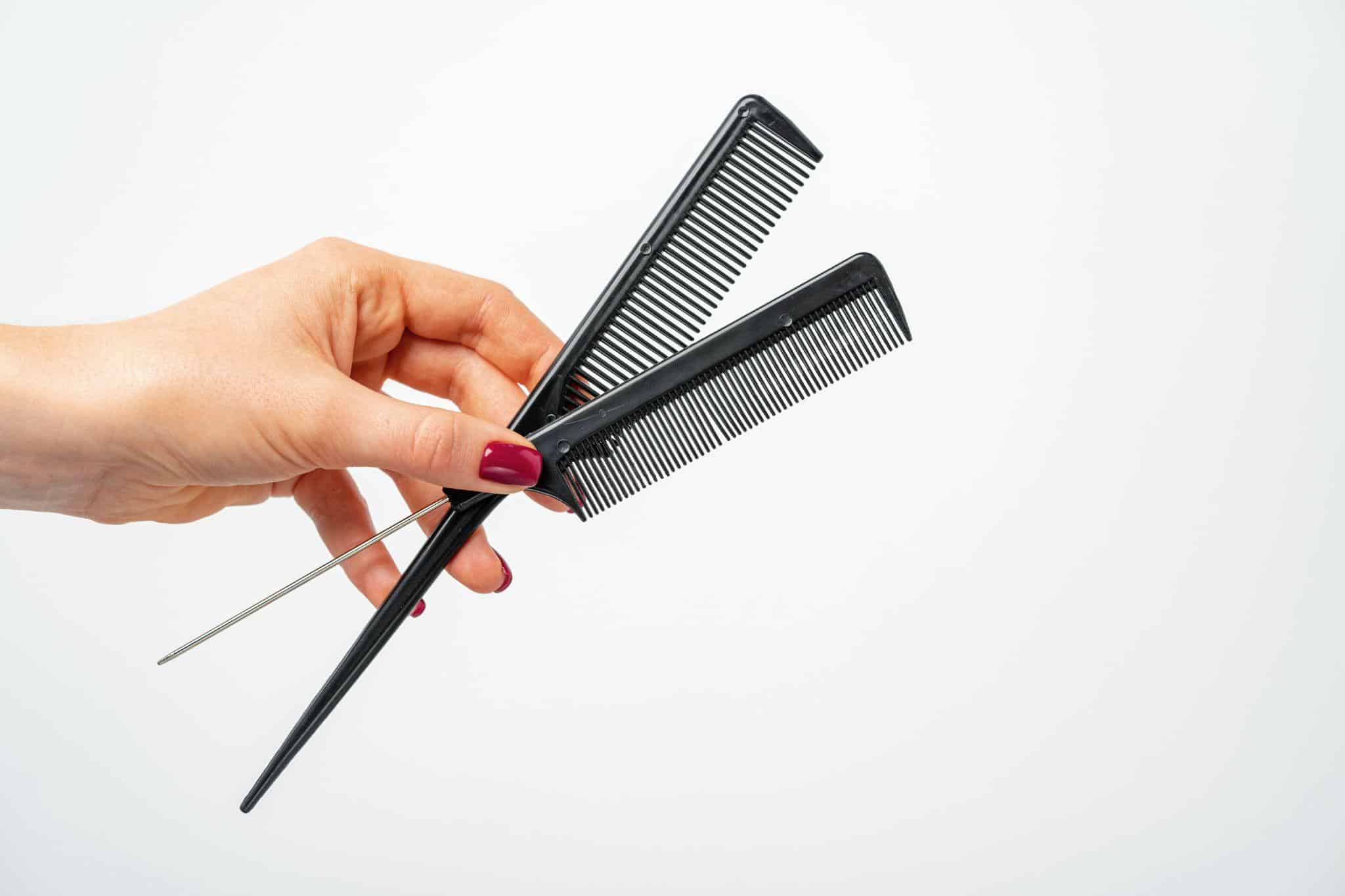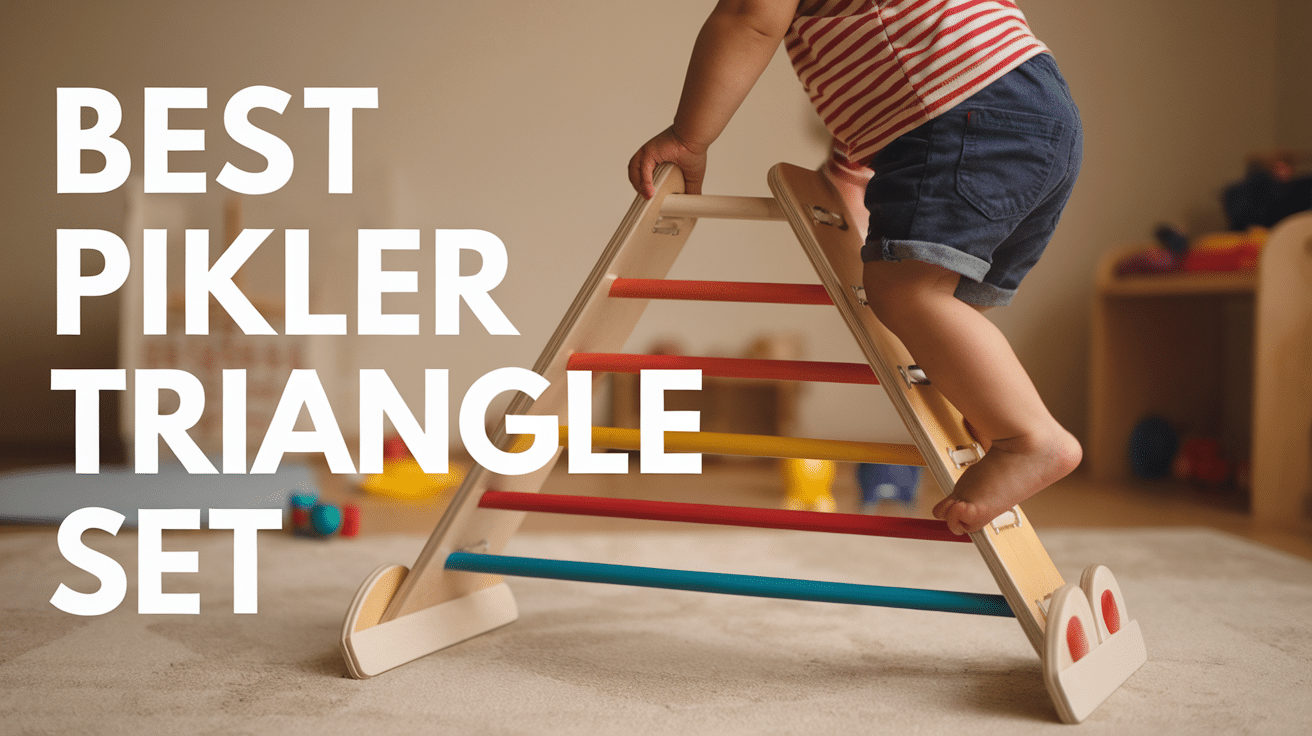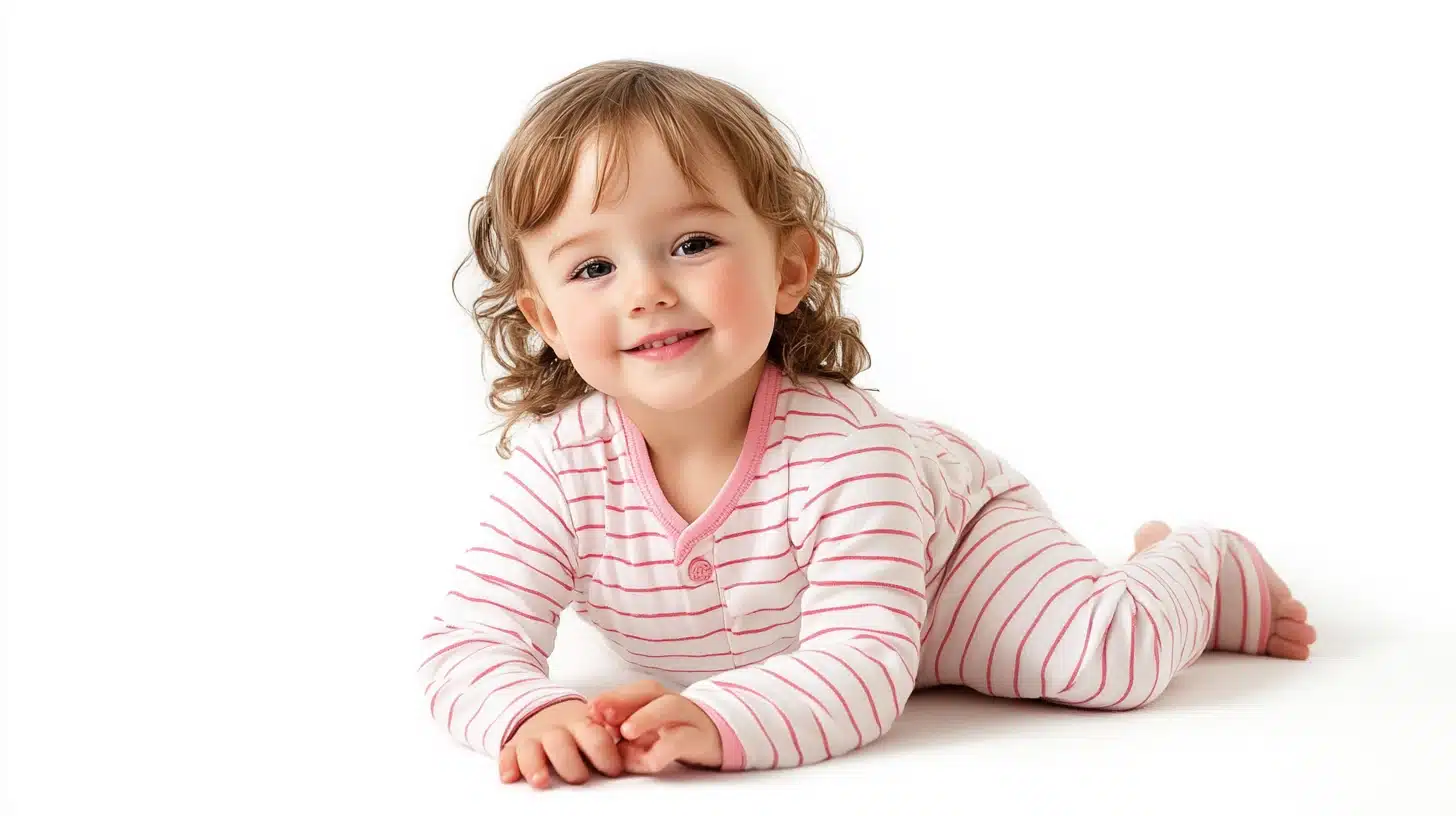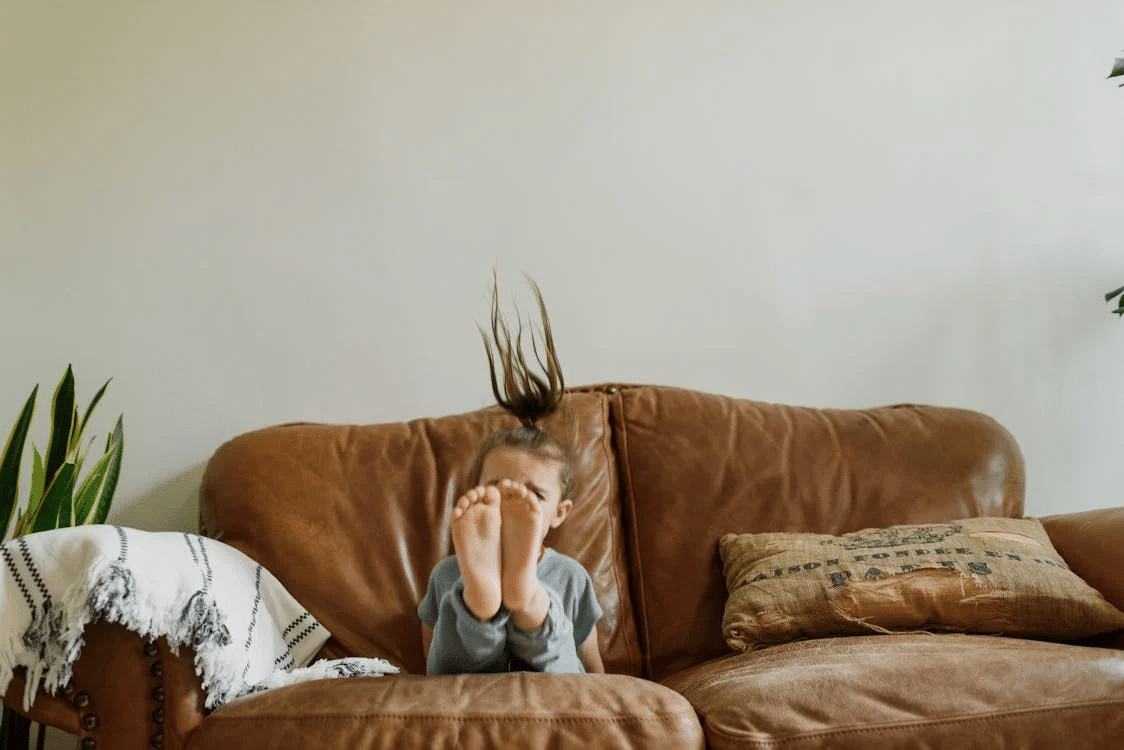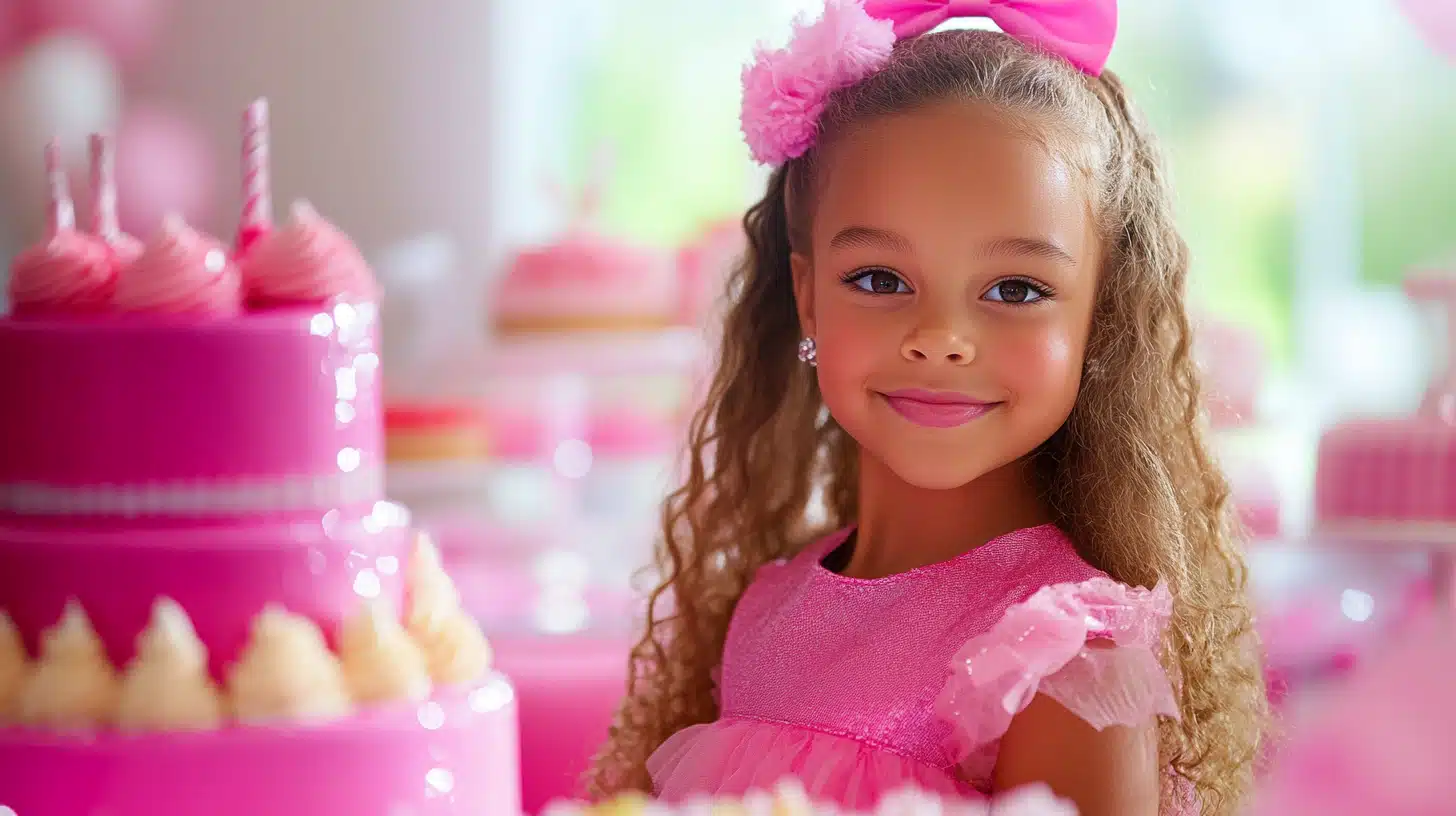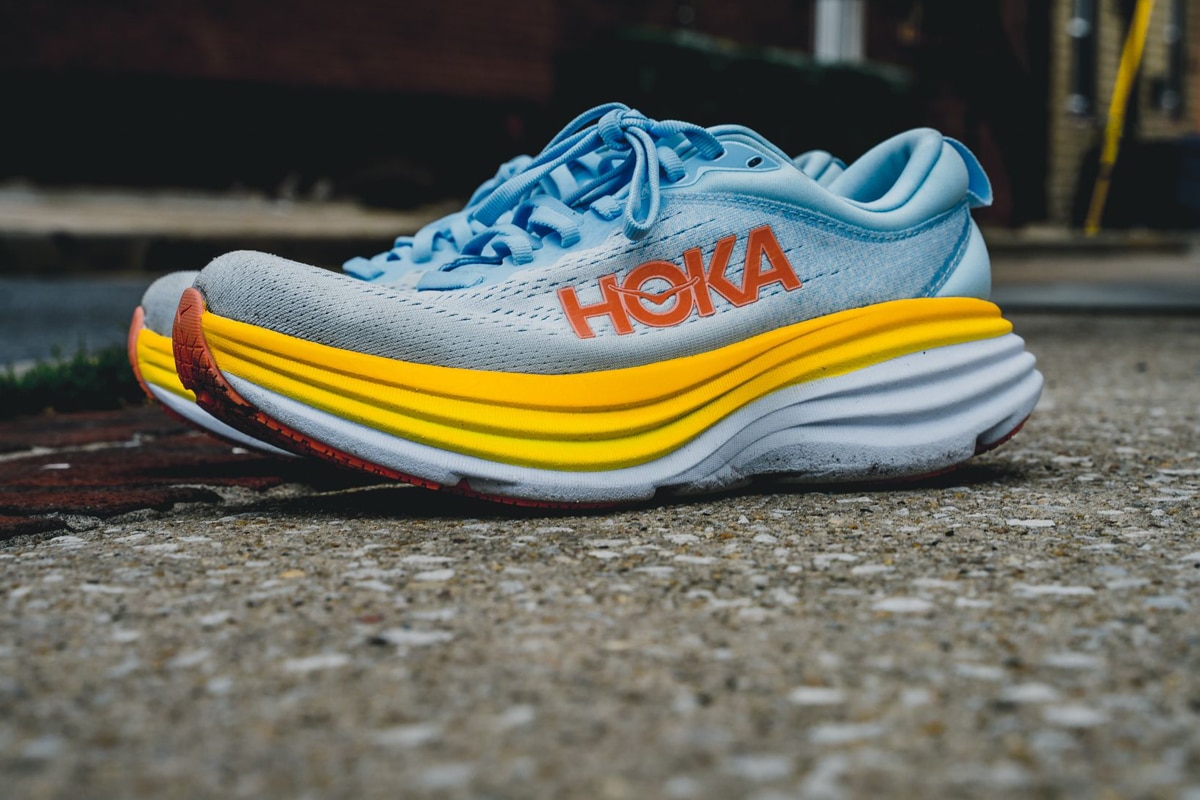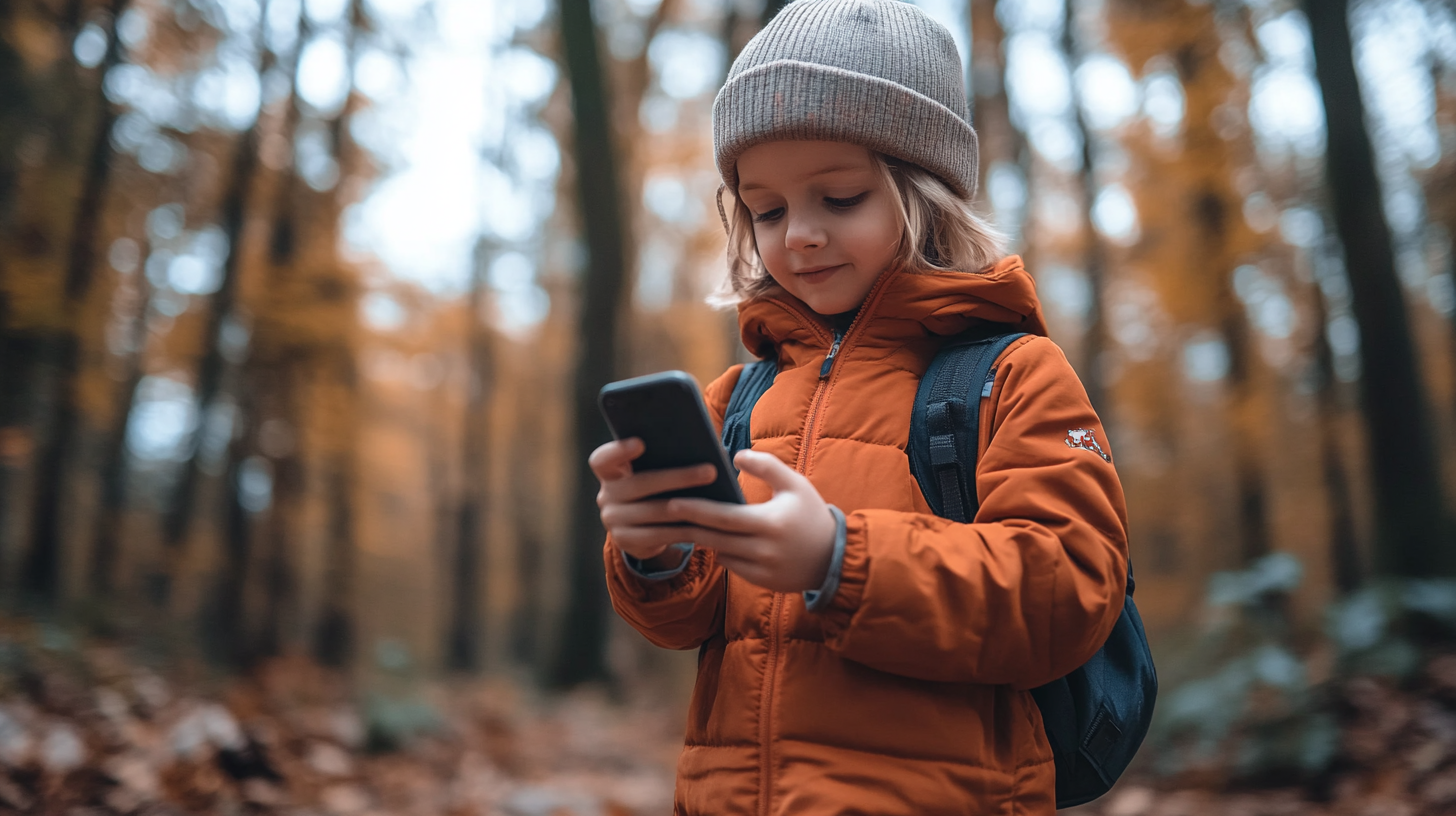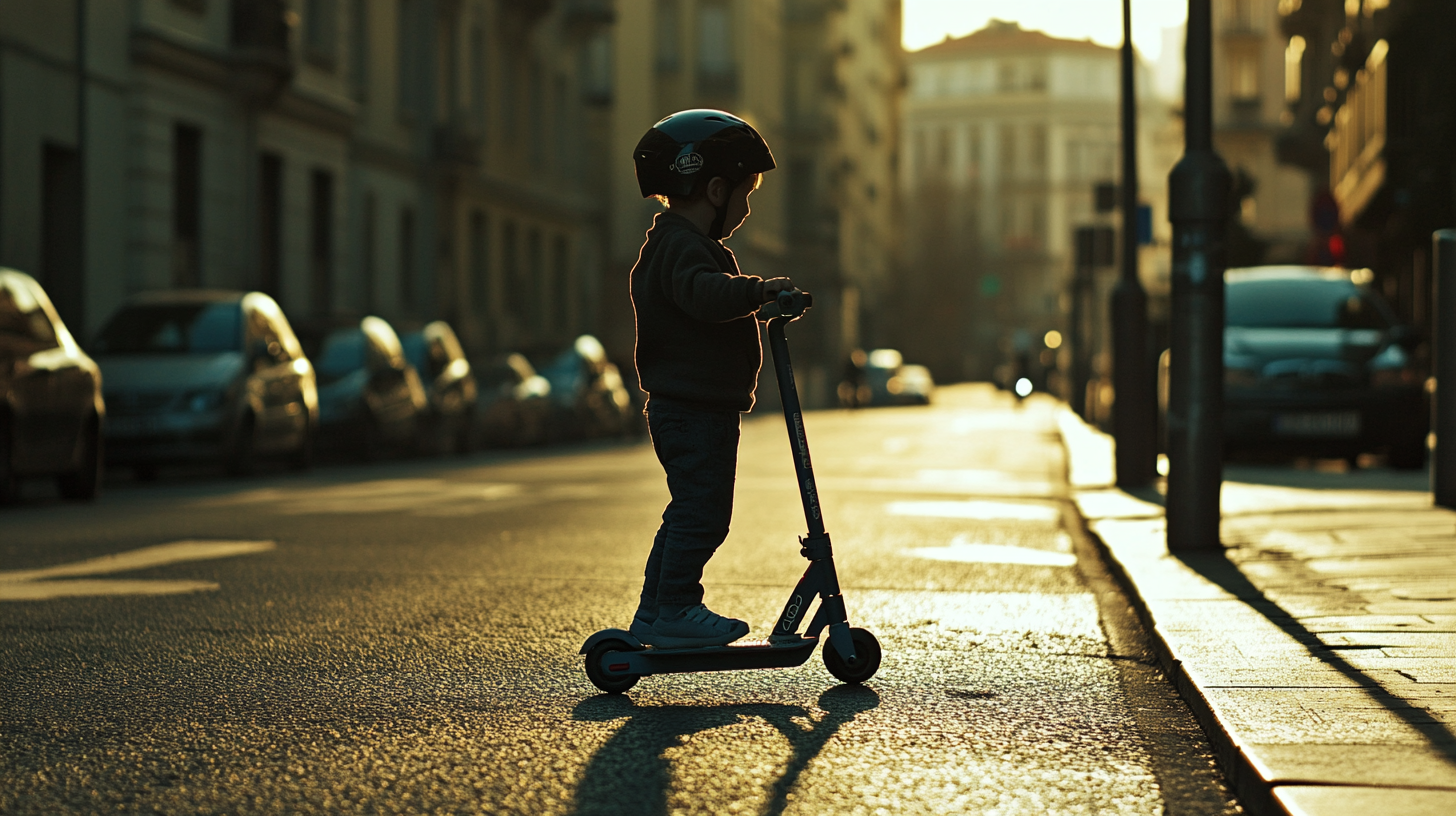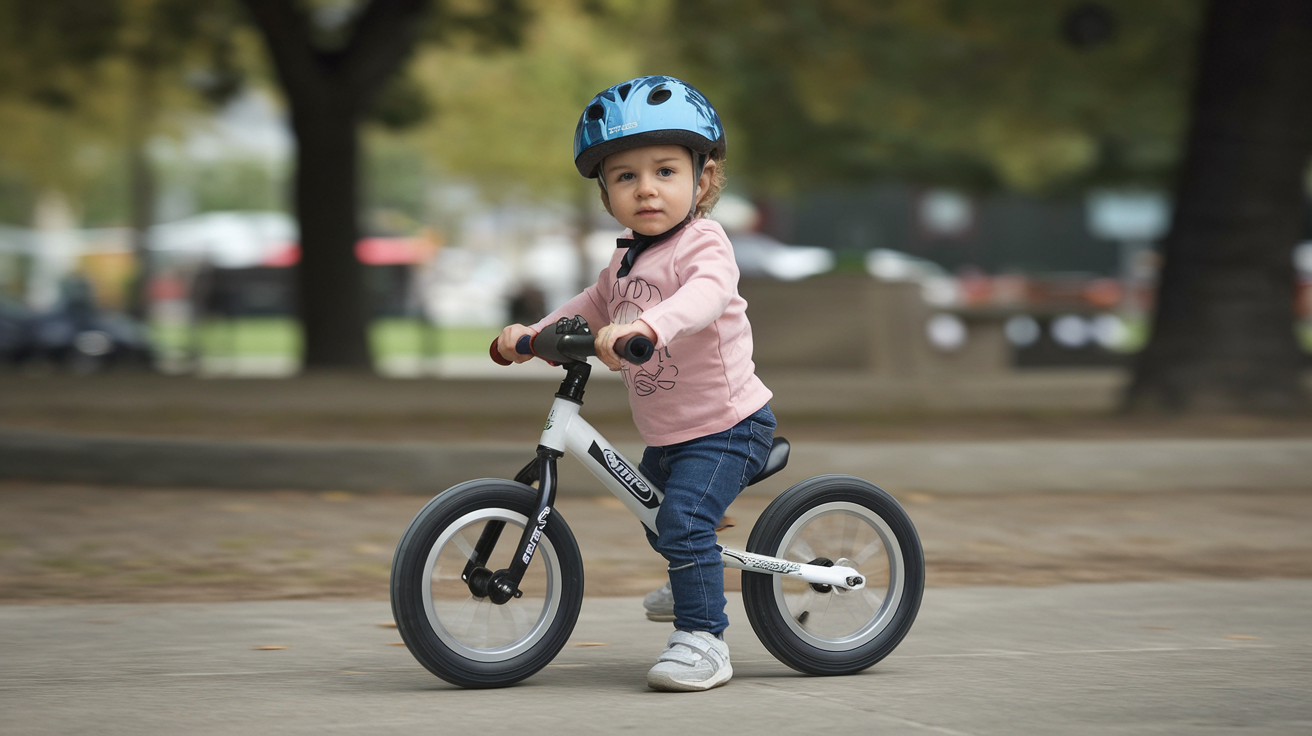
Is your little one walking with confidence? It might be time to introduce them to a balance bike! These pedal-free bikes help kids learn the basics of balance and steering before moving to regular bicycles.
Balance bikes are designed for children as young as 18 months. They sit close to the ground, allowing kids to use their feet for support and movement.
As they gain skill, they’ll start to glide with their feet up.
Choosing the right balance bike depends on your child’s age, size, and budget. The right bike should have a seat that lets your child put both feet flat on the ground while sitting.
This guide will help you find the perfect balance bike for your child and show you how to make the most of this important step in their development.
When Kids Should Start Using a Balance Bike?
Balance bikes have no pedals, allowing children to focus purely on balance skills before learning to pedal.
Once your child can walk confidently without assistance, they’re ready to begin using a balance bike.
Most children start using balance bikes between 18 months and 5 years old, with many experts suggesting around 2-3 years as an ideal starting point.
Signs your child is ready for his/her balance bike-
- Can walk steadily without help for several minutes at a time
- Shows interest in bikes, scooters, or other moving toys
- Can stand briefly on one foot without falling over
- Has developed enough leg strength to push off the ground repeatedly
- Can follow basic safety directions about stopping and slowing down
- Demonstrates good head control and upper body strength
Starting early with balance bikes helps children develop important physical skills, including coordination, confidence, and spatial awareness.
Many children who start with balance bikes can transition directly to two-wheel pedal bikes with minimal difficulty.
Benefits of Learning to Ride a Balance Bike
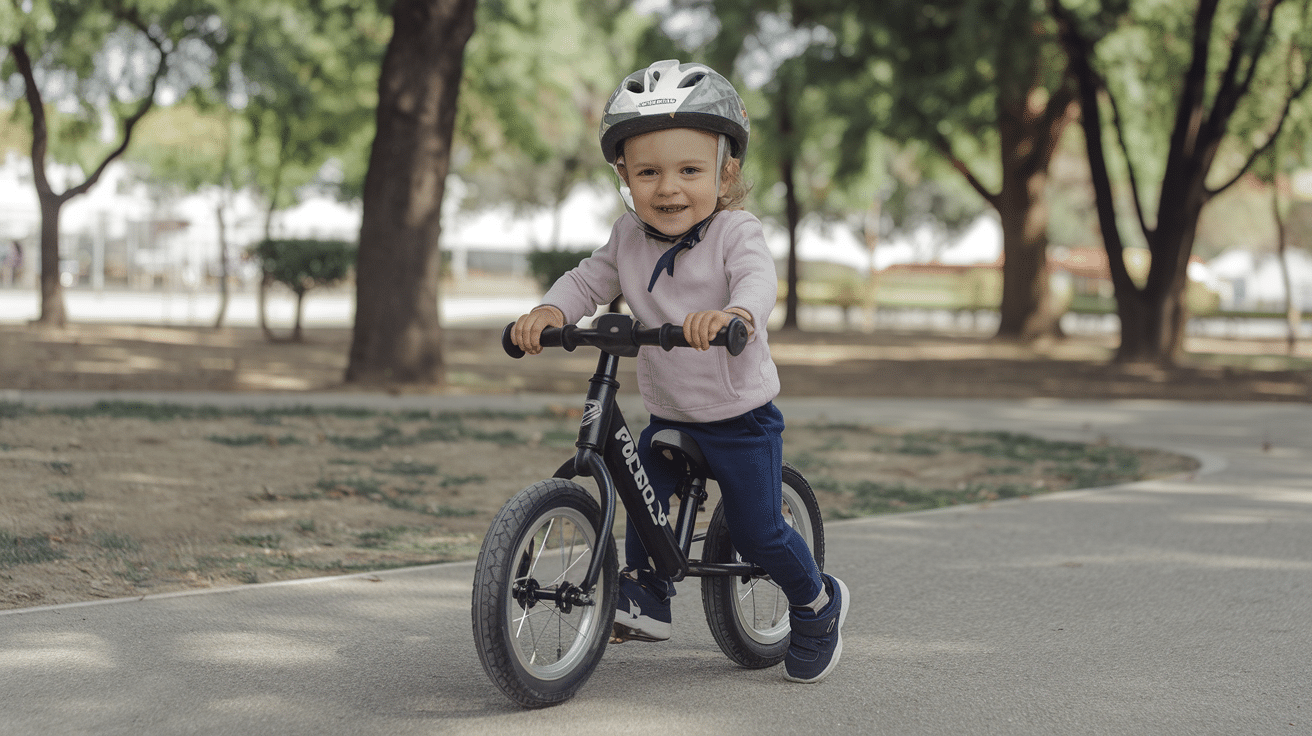
Balance bikes offer children a natural way to learn biking skills. They allow kids to focus on balancing first without the complexity of pedaling.
Children can push with their feet and gradually learn to glide. This builds essential skills and makes transitioning to regular bikes much easier and faster.
Why Balance Bikes Are Good for Kids?
- It helps children get better at balance, coordination, and using their muscles.
- Builds up a child’s belief in themselves before moving to regular bikes.
- There is no need for training wheels when learning to ride.
- It gets kids to play outside and be active.
Things to Consider Before Choosing a Balance Bike
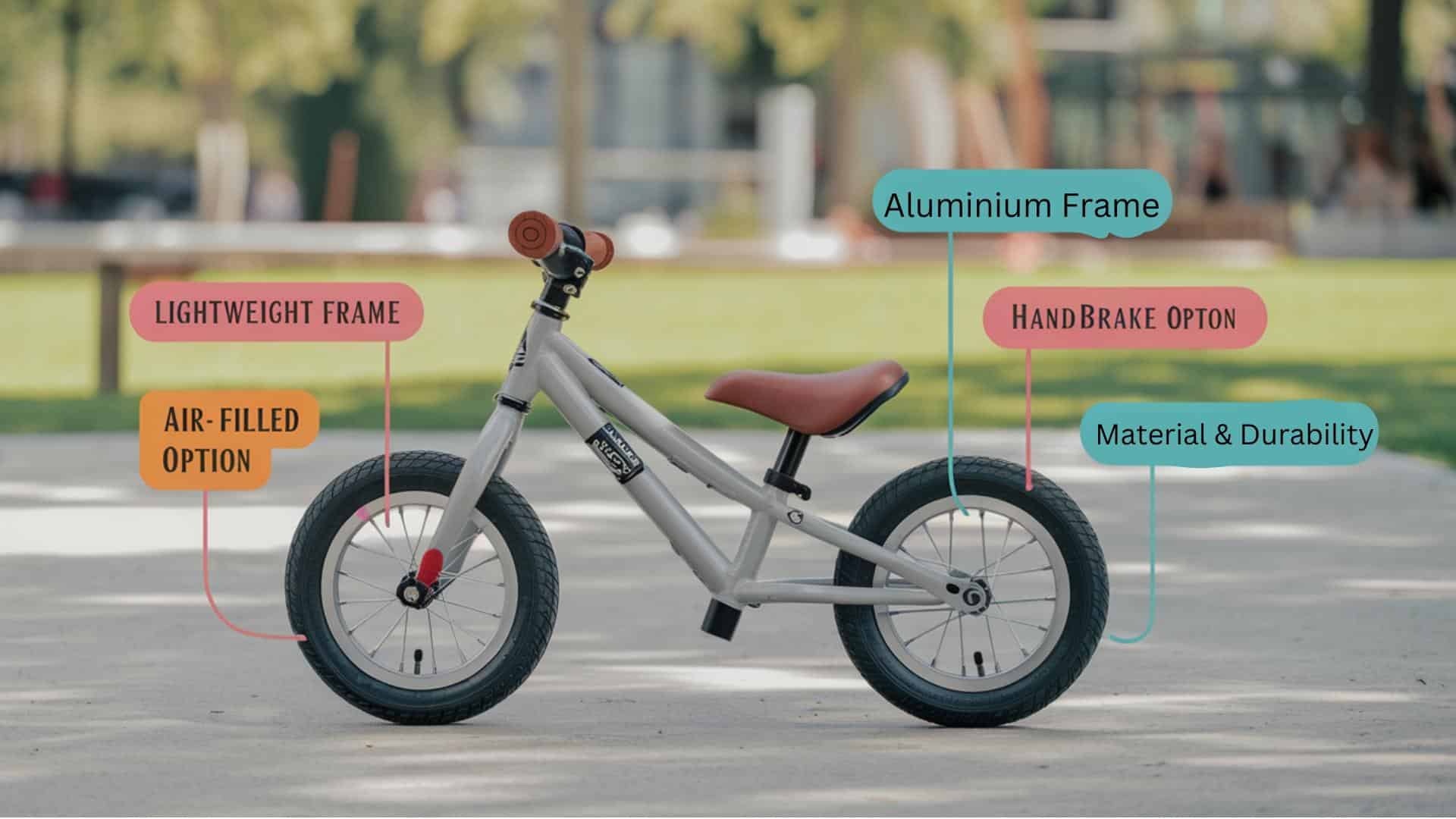
When picking a balance bike for your child, several key factors will help you make the right choice. These points will ensure you select a bike that fits well, is safe, and suits your child’s needs.
- Size & Fit: Look for the correct seat height that allows feet to be flat on the ground and a frame your child can easily step over.
- Weight: For easy handling, choose a bike that weighs 30% or less of your child’s weight.
- Tires: Air-filled tires give a better grip on various surfaces, while foam tires need no maintenance.
- Brakes: Hand brakes are useful for older kids and those who ride downhill.
- Material & Durability: Aluminum frames are lighter but more costly; steel frames are stronger but heavier.
- Convertible Options: Some balance bikes can grow with your child by changing into pedal bikes later.
The 5 Best Balance Bikes in the Market
We’ve grouped these balance bikes by what they do best, looking at key features that help kids learn to ride.
Here is a detailed list, from affordability to safety, these are the best options to consider:
1. Guardian Balance Bike
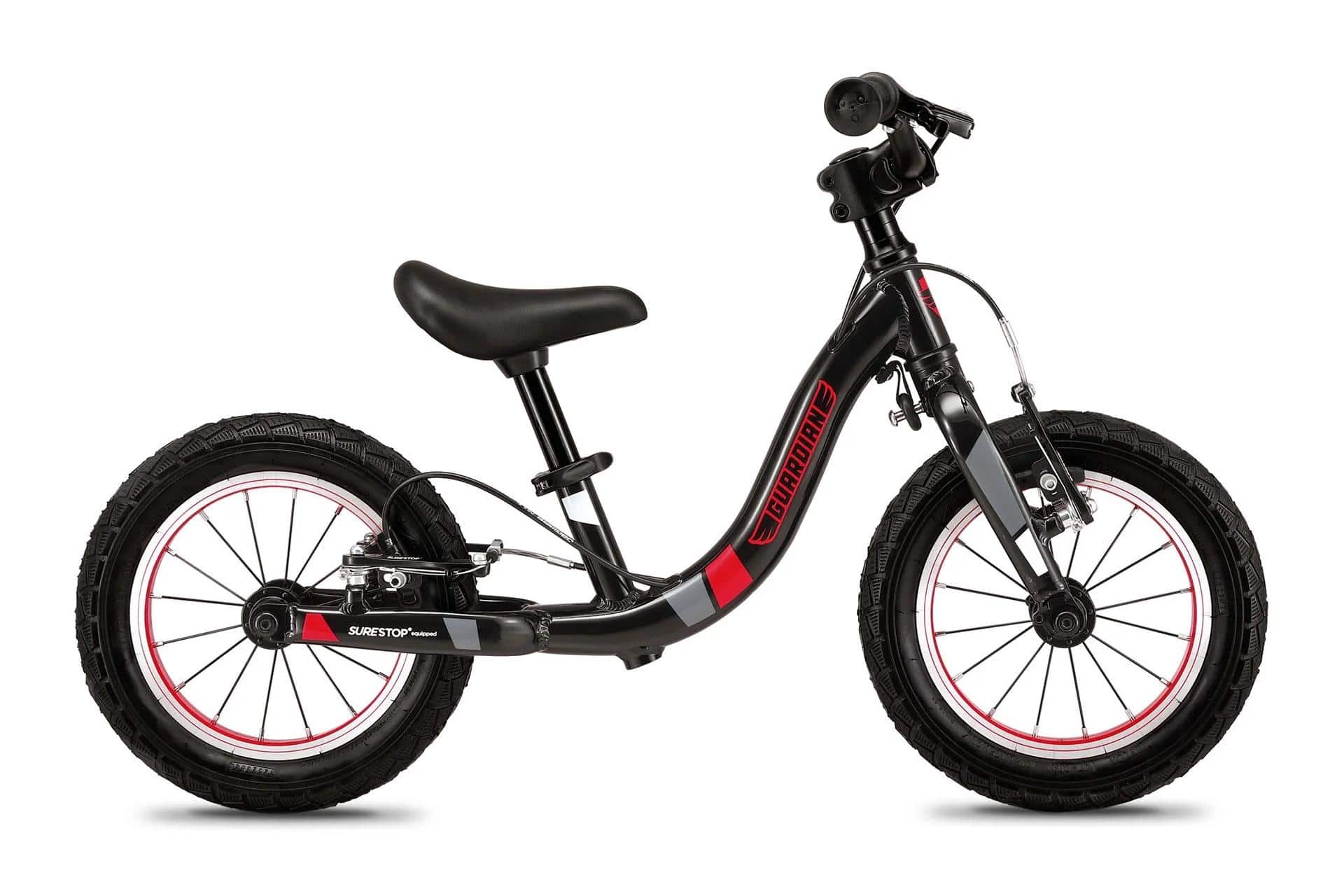
This bike is considered the best balance bike for toddlers between 2-5 years old.
Key Features:
- Patented SureStop Brake System
- Ultra-lightweight aluminum frame
- Quick-release adjustable seat that grows with your child
- Wide wheelbase for better balance and control
- Steering limiter to help prevent accidental overturning of the handlebar
2. Woom 1
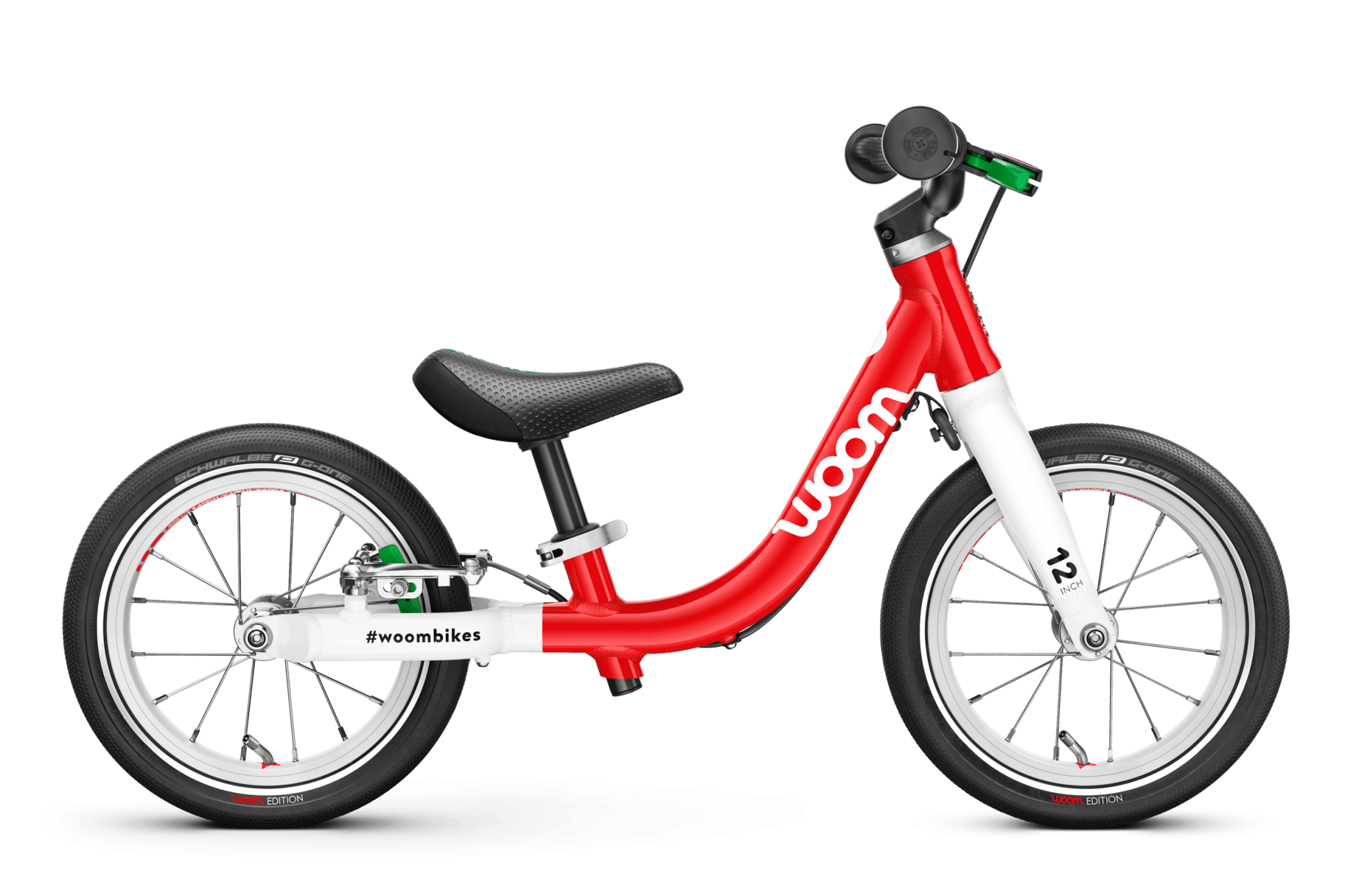
An innovative and ultralight 12″ balance bike designed for young children aged 18 months and over.
Key Features:
- Weighs just 6.6 pounds
- Features a low 7-inch step-in height
- Suitable for children starting at 18 months
- Equipped with air-filled tires for a smooth ride
- Includes a safe steering limiter
3. Banana Bike GT
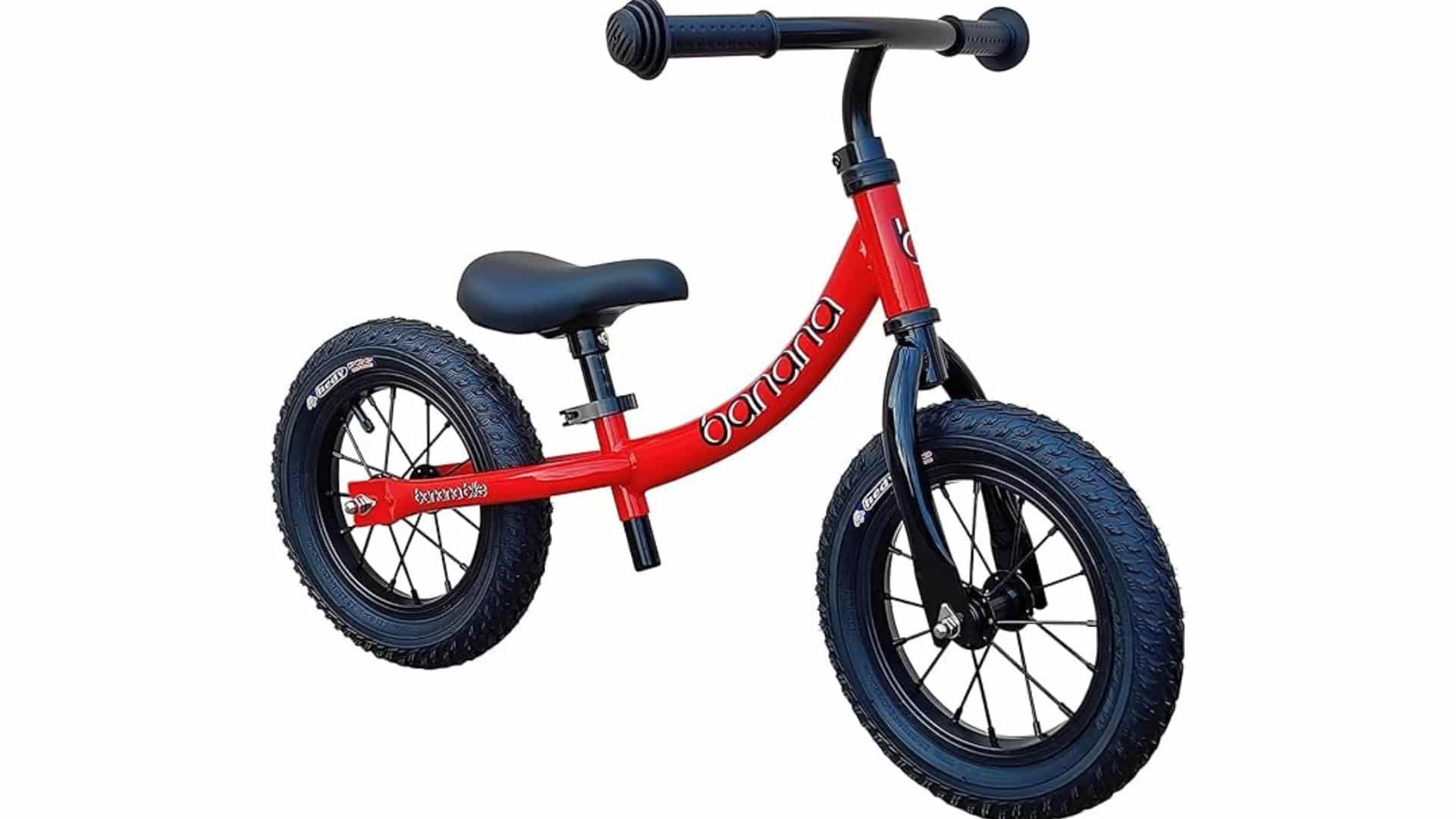
This affordable option weighs only 8 pounds and has an adjustable seat, making it great for ages 2-4.
Key Features:
- A safe and stable design with a low center of gravity and banana-shaped frame for toddlers aged 2-4
- Quick assembly with durable seat, safe grips, 12-inch air tires, twin-bearing headset, and powder coating
- Adjustable seat and handlebar with quick-release height adjustment
- Lightweight and durable
4. Strider 14x Convertible

This bike grows with your child—add pedals when they’re ready to move up from balance riding.
Key Features:
- Convertible design allows for an easy transition from balance to pedal bike
- 14-inch air-filled tires for a smooth ride
- Lightweight and durable steel frame
- Adjustable seat height range for extended use
- Footrest for balance bike mode
5. REI Co-op Cycles REV 12
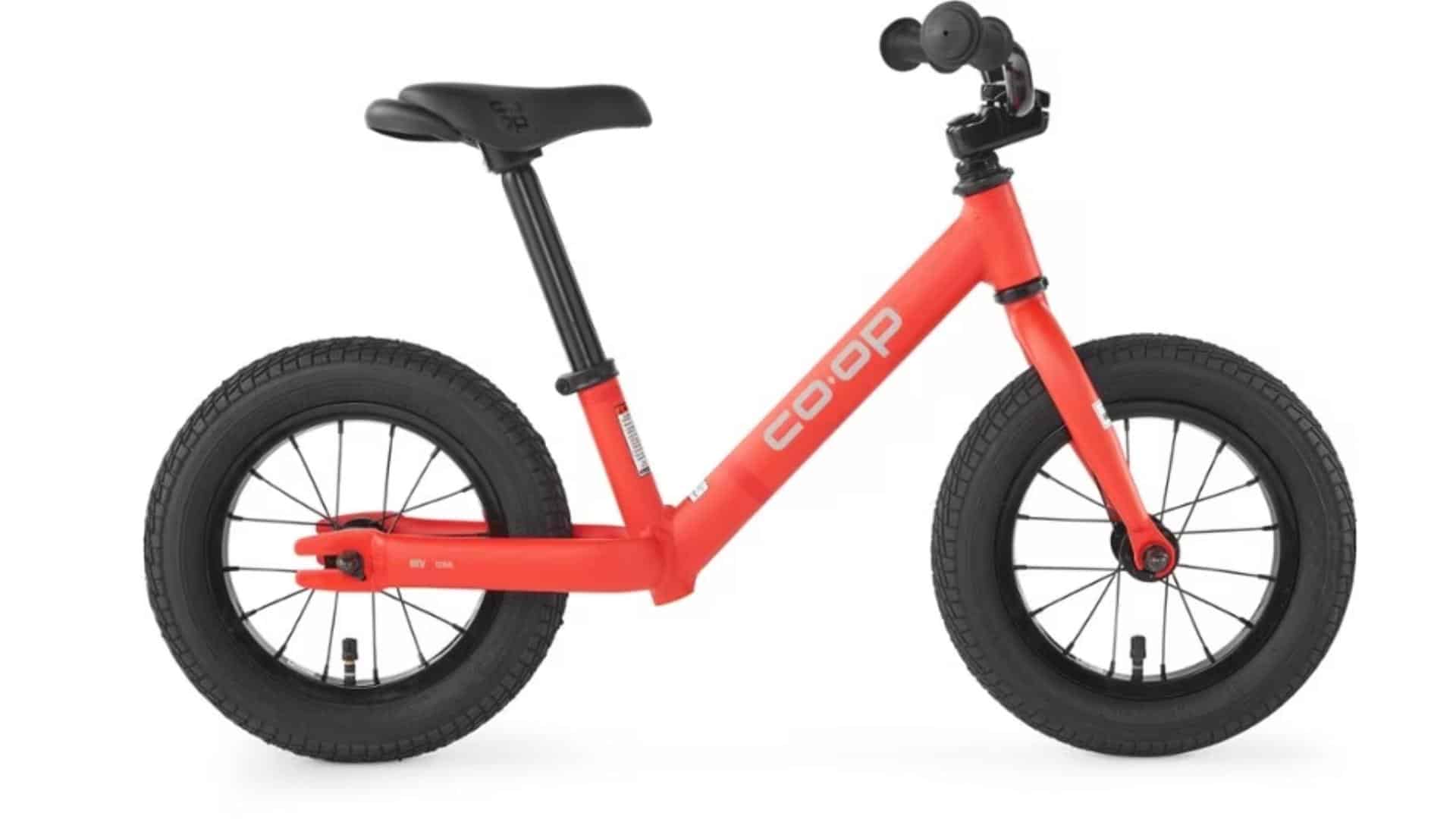
With a taller seat height and strong build, this bike works well for bigger children who need more room.
Key Features:
- Aluminum step-through balance frame
- Adjustable seat height ranges from 13.75 to 17.5 inches
- In-store bike assembly available.
- Weighs 9 pounds
Must Have Safety Gear and Accessories
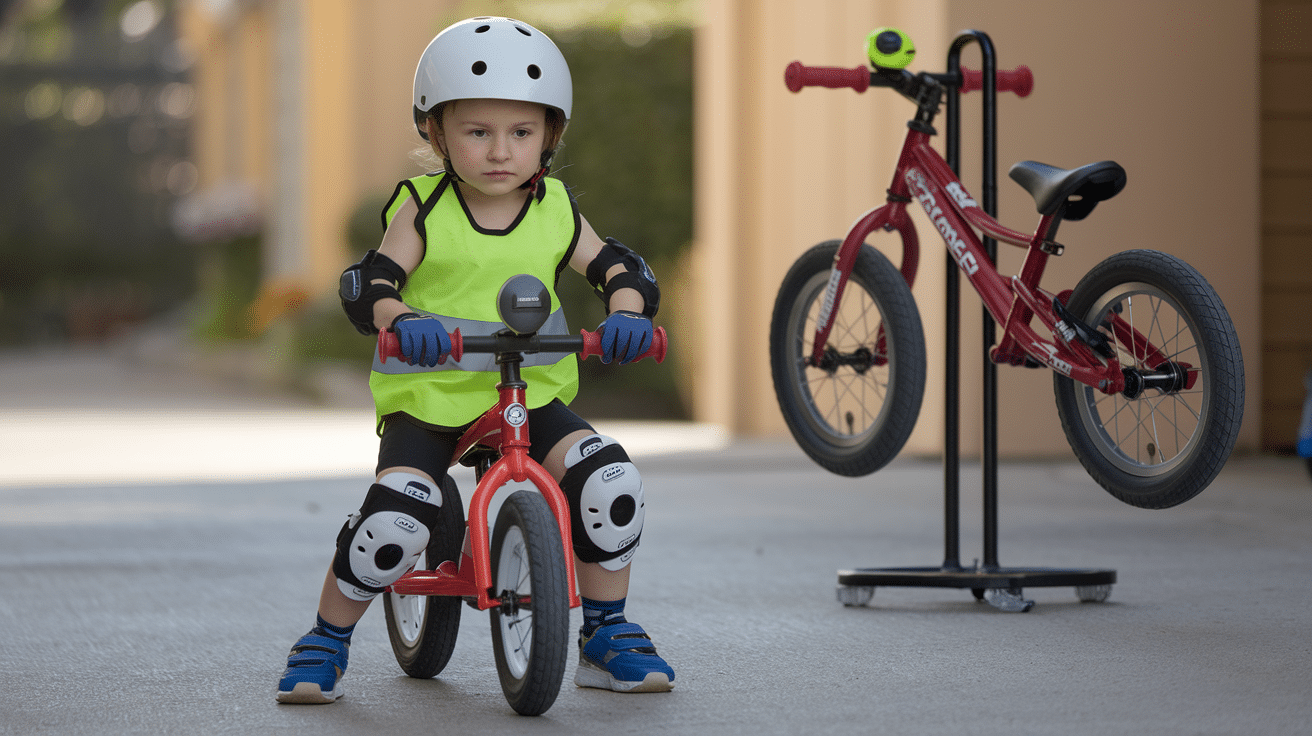
Now that you have selected a bike for your little one, here are some essential accessories you should consider, too:
- Helmets: All children should wear properly fitted helmets when riding. Look for models with adjustable straps and good ventilation.
- Knee & Elbow Pads: These provide extra protection for beginners who are likely to fall while learning to balance.
- Bike Gloves: Help children maintain a better grip on handlebars and protect their hands if they fall.
- Reflective Gear & Bells: Ensure your child can be seen and heard, especially near driveways or quiet streets.
- Bike Stands & Storage Solutions: Keep the balance bike off the ground when not in use to prevent damage and teach good bike care habits.
Common Mistakes Parents Make
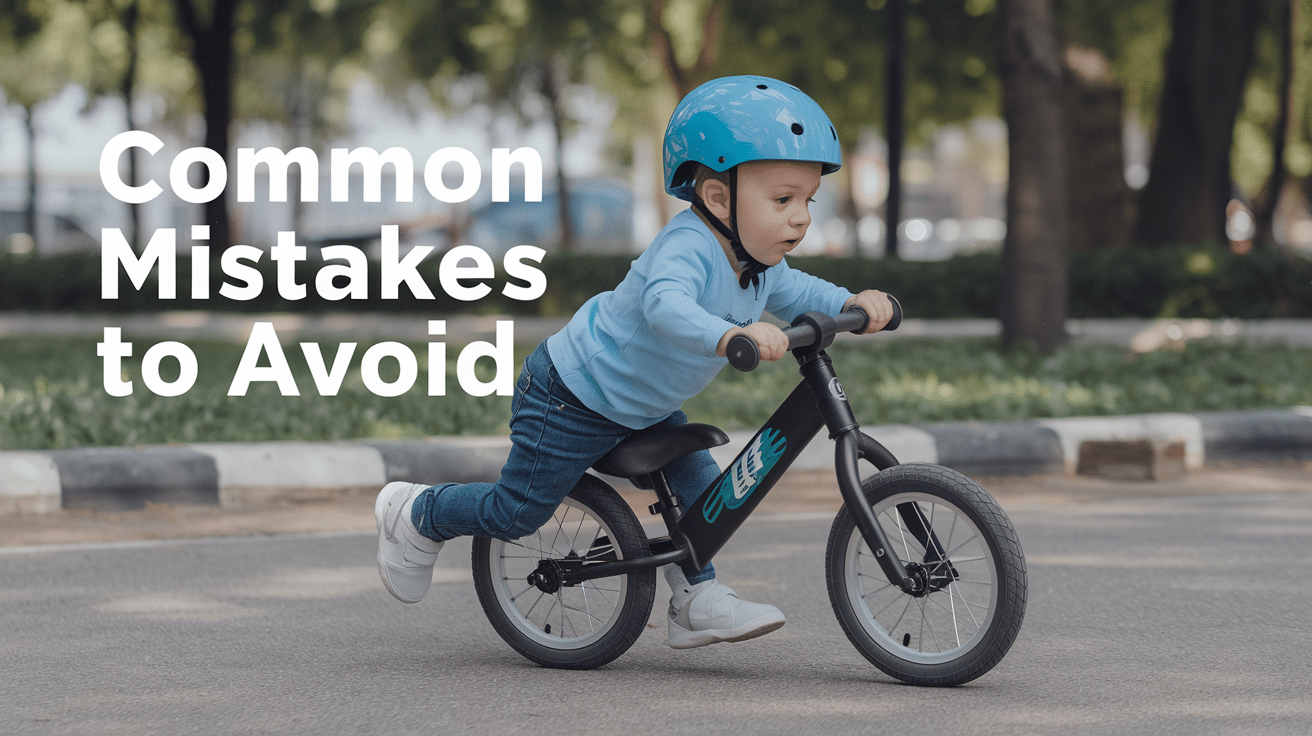
Parents often choose the wrong bike size or skip safety gear when teaching kids to ride. Many don’t adjust seats properly, making balance difficult.
Some rush children to pedal bikes before they’re ready, while others push kids too much instead of letting them learn to balance naturally.
Avoiding these errors helps children succeed and enjoy biking. Here are some mistakes you should avoid as a parent:
- Choosing the wrong size or weight: Too big or heavy Bikes make it harder for kids to learn. Pick one your child can handle easily.
- Skipping safety gear: Always use helmets and knee pads. Falls may happen during learning.
- Not adjusting the seat properly: Seats should be low enough for feet to touch the ground firmly. This builds confidence.
- Rushing the transition to a pedal bike: Take time with balance bikes first. Kids need to master balance before pedaling.
- Over-reliance on pushing instead of letting kids learn balance: Let children glide and find their own balance. Too much pushing doesn’t help them learn.
Check if you’re making these mistakes and fix them to help your child succeed.
Additional Insights on Balance Bikes
Balance bikes help kids learn to ride without training wheels. Kids sit and push with their feet, learning how to stay upright naturally. Training wheels, however, can teach bad habits since children don’t know true balance.
Unlike scooters, where one foot stays on the ground, balance bikes let both feet move freely. This helps children develop better coordination and balance skills.
Experts strongly support balance bikes. Physical therapists note they build core strength and motor skills better than other options.
Professional cyclists point out that children who start on balance bikes often learn to ride pedal bikes more quickly and with fewer falls.
Many parents report that kids who use balance bikes skip the training wheel stage completely, moving directly to two-wheel riding with greater confidence and fewer fears.
From Balance Bikes to Pedal Bike
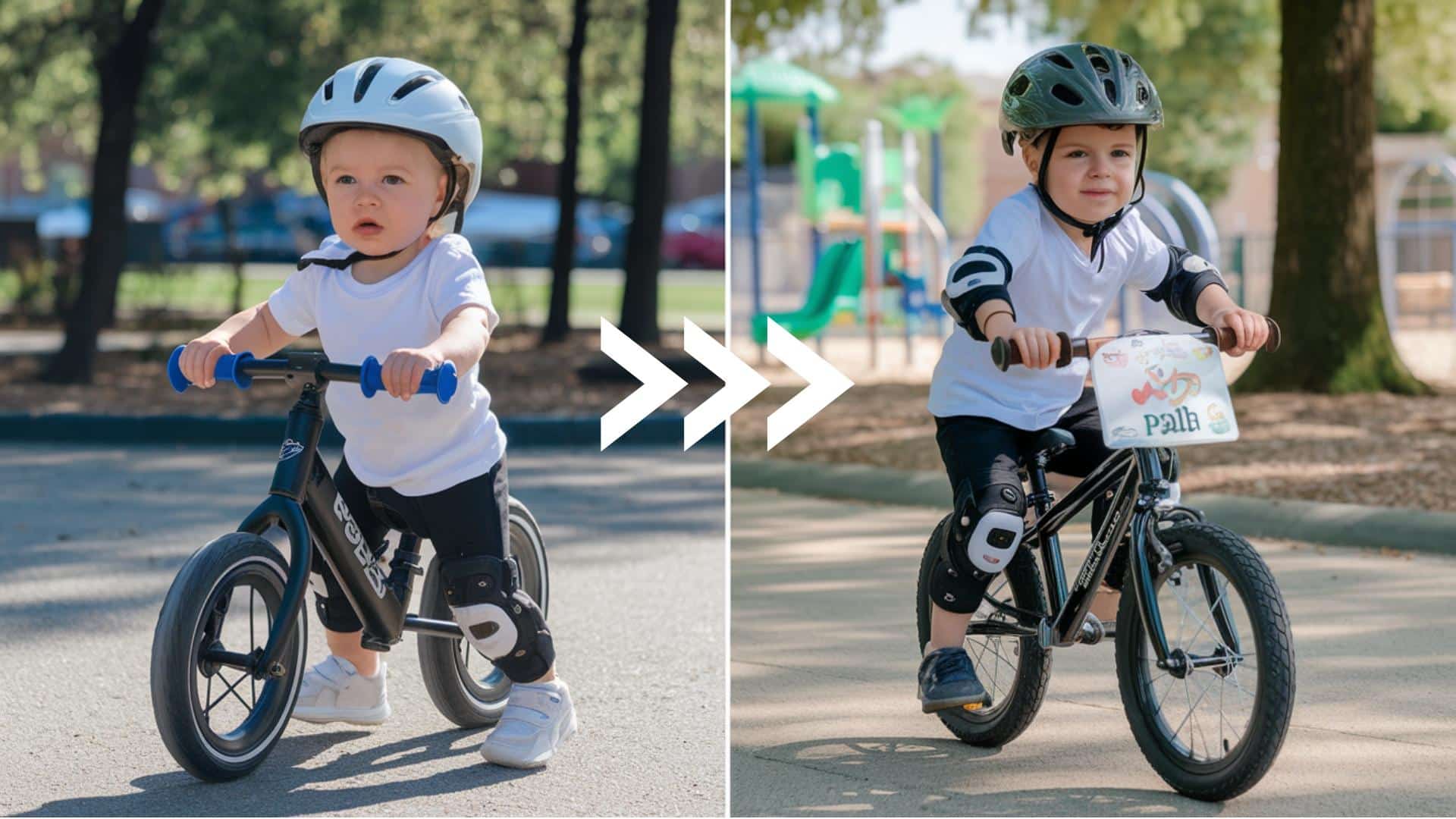
Moving from a balance bike to a pedal bike is an important step. Children who use balance bikes first often learn to ride pedal bikes faster.
They already know how to balance, so they only need to learn to pedal. Most kids make this switch between ages 3-5, depending on their skills and confidence.
Signs they are ready for a pedal bike:
- Can walk or run while sitting on the balance bike
- They can lift their feet for several seconds while gliding
- They can control their speed and make turns easily
- Show interest in bikes with pedals
- Can follow basic safety instructions
When choosing a first pedal bike, look for one that is lightweight and the right size. The child should be able to touch the ground with both feet when sitting on the seat.
Remove training wheels if possible, as they may slow the learning process.
Wrapping It Up
Finding the best balance bike for your child doesn’t need to be hard. Focus on getting the right size, weight, and features that match your child’s age and skills.
A good balance bike will build your child’s confidence, improve their motor skills, and make moving to a pedal bike much easier. Most kids who use balance bikes skip training wheels completely!
Remember to pair your bike choice with proper safety gear and regular practice in safe areas. Watch for signs that your child is ready to move up to a pedal bike, such as good gliding and steering skills.
Your child will gain important physical skills with the right balance bike while having fun. This simple tool can set them up for years of biking enjoyment and outdoor activity.
Which bike did you like the most? Tell us in the comment section!

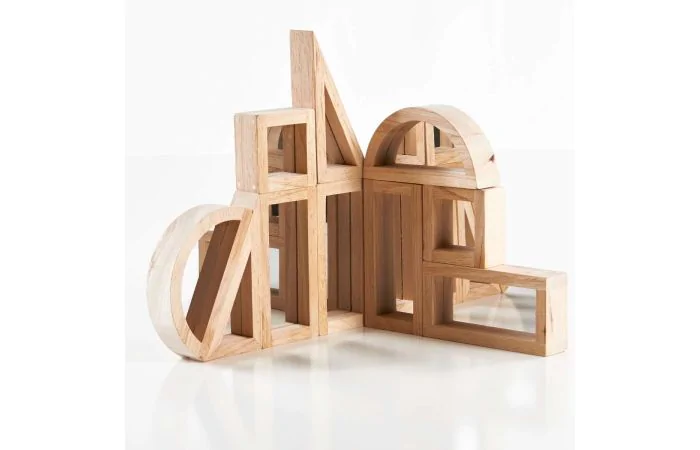
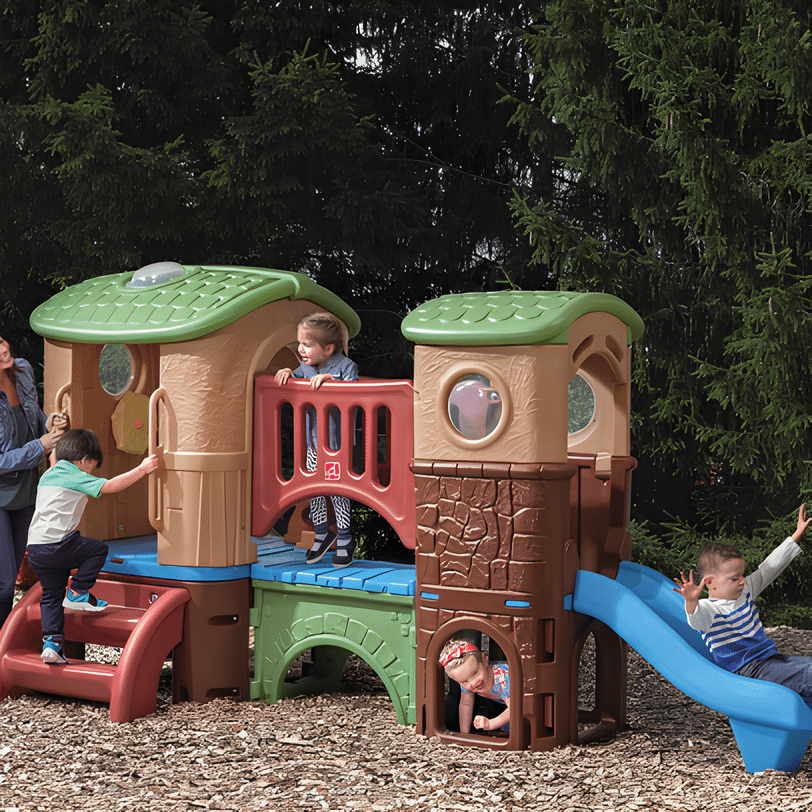
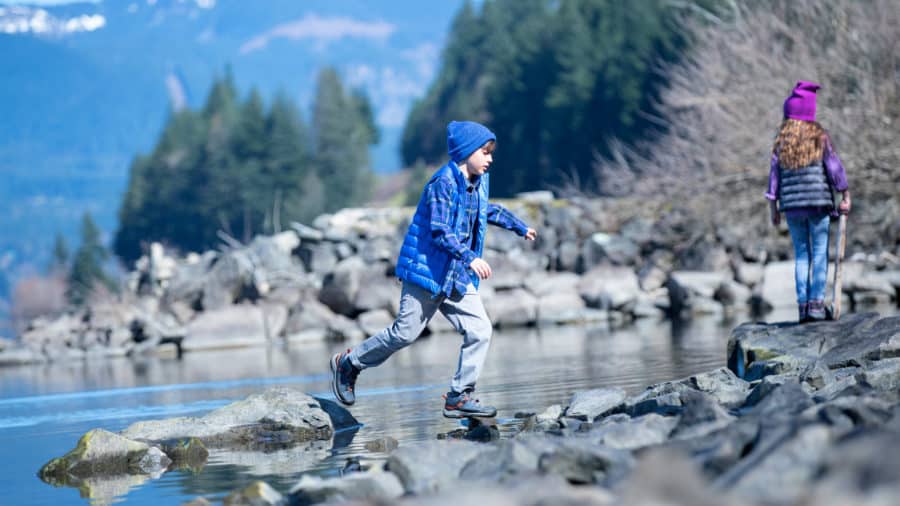
![11 Richest Neighborhoods in Boston, MA [2025]](https://cdn.mothersalwaysright.com/wp-content/uploads/2025/03/11-Richest-Neighborhoods-in-Boston-MA-2025.webp)
